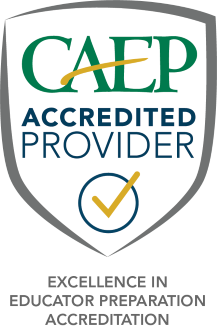Student Resources
College of Education students will find information concerning testing, licensure programs, portfolio development, and the milestone review process below. Because students must complete four milestones at the undergraduate level and three milestones at the graduate level, it is important that in addition to reviewing the information found on these pages, students meet often with their advisors (undergraduate) or committee chairs (graduate).
Students in education courses at Austin Peay State University are expected to demonstrate the following positive professional dispositions. Failure to do so may result in dismissal from the Teacher Education program. These dispositions will be evaluated by university professors and classroom teachers and are aligned with InTASC and CAEP standards.
- Collaboration – Collaborates with others and makes positive contributions toward productive, collaborative work.
- Attitude – Demonstrates a positive attitude in typical and challenging situations.
- Relationship with Adults – Maintains positive relationships with adults at all times.
- Communication – Communicates effectively with all stakeholders and uses verbal, non-verbal, and written communication techniques to foster positive interactions and promote learning in the classroom and school environment.
- Attendance – Knows and adheres to university, school, and/or district policies regarding attendance and punctuality.
- Relationship with Students – Interacts appropriately and positively with students and provides instruction that respects and aligns with the intellectual, social, cultural, emotional, and physical needs of the age group.
- Initiative – Initiates and completes responsibilities without prompting.
- Professional Appearance – Is clean and neat and adheres to university, school, and/or district policies for professional appearance.
- Legal and Ethical Conduct – Knowledgeable of and adheres to university, school, and/or district policies related to legal and ethical standards of behavior.
- Diversity – Listens and responds appropriately to others’ opinions and exhibits respect for those of different cultural backgrounds, cognitive and physical abilities, and personal ideologies.
- Learning Environment – Demonstrates a commitment to creating a positive, low-risk learning environment by providing students with choices, making relevant connections, building understanding, and developing relationships that create a sense of belonging between and among learners.
- Time Management – Demonstrates effective use of time through thoughtful planning, thorough preparation, and efficient organization.
- Commitment to Student Learning – Demonstrates commitment to student learning by evaluating student strengths and needs.
- Commitment to Continuous Improvement – Demonstrates commitment to continuous improvement as an educator through intentional use of information and feedback related to professional practice.
PRAXIS II
Tennessee Testing Requirements
All cut-off scores linked above were accurate when printed. However, students should be aware that the State of Tennessee regularly changes cut-off scores and requirements. Requirements are also updated on the Praxis website.
The tests and/or cut-off scores in effect at the time of licensure will be required.
Contact the Math Department to access information about testing out of Math 1410.
Congratulations on reaching the Praxis stage of your teaching journey! The Eriksson
College of Education is here to support you every step of the way. This page provides
resources and tips to help you prepare for and conquer the Praxis exams with confidence.
Preparation Tips:
- Identify Your Praxis Exams:
- Determine the specific Praxis tests required for your desired teaching license and content area.
- Visit the ETS Praxis website for a comprehensive list: https://praxis.ets.org/
- Utilize Preparation Resources:
- Explore these preparation resources to help you better understand and prepare for
test format, content areas and sample questions:
- Study.com - Study guides and test prep materials
- Learn more about disability accomodations, or taking your exam online or at a testing center.
- Explore these preparation resources to help you better understand and prepare for
test format, content areas and sample questions:
- Develop a Study Plan:
- Create a personalized study schedule that fits your needs and learning style.
- Allocate dedicated study time each week and break down the material into manageable sections.
- Utilize a variety of study methods like flashcards, practice tests and group study sessions.
- Practice Makes Perfect:
- Take advantage of practice tests available online and through official resources.
- Analyze your performance to identify areas needing improvement and adjust your study approach accordingly.
- Manage Test Anxiety:
- Familiarize yourself with the testing format and environment beforehand.
- Develop relaxation techniques like deep breathing exercises to manage test anxiety.
- Get a good night's sleep and eat a healthy breakfast before your test day.
Eriksson College of Education Resources:
- Access practice books and online resources through the APSU Library.
- Reach out to your professors or program advisors for specific guidance and recommendations.
- Attend any Praxis workshops or study sessions offered by the College. Workshops are hosted periodically each semester.
Follow the simple steps outlined here to complete the fingerprinting process.
